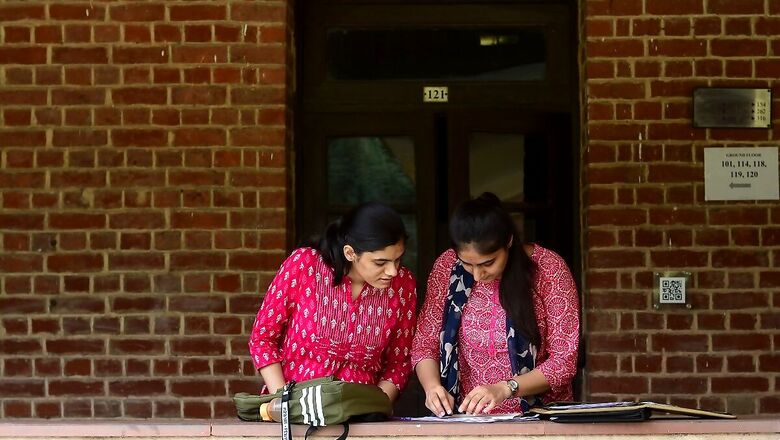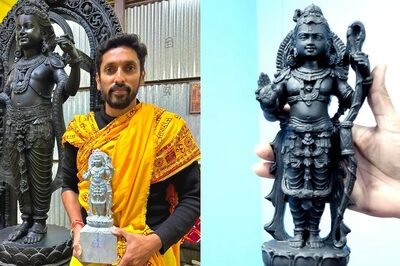
views
“CUCET has a pro-upper class bias and pushes students from economically and socially deprived sections further towards the margins,” claims Dr Richa Raj, a former member of the academic council of the University of Delhi. She was among many academicians expressing concerns against the CUCET or the common entrance test for admission to central universities across India. Speaking at the webinar titled ‘CU-CET and Its Perils’ organized by Academics for Action and Development (AAD), Raj added, “CUCET is also not conducive for those students who want to change their streams.”
This is the 11th year of the Central University – Common Entrance Test. It has been functional since 2010 but only 14 central universities opted for it. Now, CUCET is being expanded to several other universities. The vice-chancellor of University of Delhi (DU) too had earlier said that DU might consider CUCET as one of its entry gateways.
All speakers in the webinar emphasized that certain groups will lag behind if CUCET gets implemented. “Coaching centers will mushroom with time and poor students are going to lose the chance to get admission in DU. Nobody would like to invest in a girl child. The best-coached students will get admission depriving talented students coming from socially and economically weaker backgrounds. The higher education in India has to be inclusive and social justice based,” said the AAD in a statement.
Associate professor of political science at the Delhi University, Chandrachur Singh said that there is a lack of consensus in opting for the policy that is promoting “one nation, one education and one admission under the garb of New Education Policy – 2020.”
The government is yet to announce its decision regarding the CUCET leading to a undertainity. Academics and activists have now stepped forward to discuss the perils of the move.
According to Singh, there should not be any hurry in implementing it, as CUCET cannot function in the current scenario of “underfunding” and “lack of resources and comprehensive evaluations”.
“You have different types of universities and we cannot apply one straitjacket step in a diverse place. This will create more problems than resolve. In 2010, DU, JNU, BHU did not opt for this test, many universities did not join the bandwagon,” he said.
“Universities should have the autonomy to design their own standards of assessing prospective students. The method cannot be applied in Central Universities as their students are interterritorial,” he added.
CUCET would lead “to linear ranking among students who have different kinds of skills”, said the professor.
Dr Misra said, The Common Entrance Tests (CETs) undermines the autonomy of universities.” Every university designs its own standards to assess students. It does not take into account the interdisciplinary nature of the university system.” He said that the CUCET is enforcing a standard test.
There are universities like Aligarh Muslim University, Jawaharlal Nehru University, and Jamia Milia Islamia that have their own character. Their exams and admission process came in a certain time and context, echoed the speakers, and highlighted that the autonomy of all higher education institutes must be protected.
On the other hand, Prof Barman said, “CUCET is a centralized bureaucratic decision as envisaged in NEP 2020. It is inflexible and will be imposed on state universities as well. The teacher organizations from the central and the state universities should join hands to impose such centralized tests,” which are exclusionary.
According to Singh these wide-sweeping reformist ideas particularly in times of uncertainty and gloom “may appear intuitive but in practical terms may not be logical and instead may turn out to be disastrous.”
While moderating the discussion, Dr Richa Raj said that the CUCET was designed to overcome the overlapping exams and claimed to provide a level playing field but it is not so.
WHAT NEP SAYS?
The centralization of higher education is the major thrust of NEP 2020. According to clause 10.12 of NEP: “Admissions to all undergraduate programs of HEIs will be preferably through assessments of National Testing Agency, to eliminate the burden of numerous overlapping entrance exams developed separately by each HEI.” AAD statement said, “Centralization of higher education is part of the design of NEP.”
But the centralization of higher education might lead to sidelining the important ideas of NEP “switching the streams”. According to Dr. Barman and Singh, “Common entrance test will lead to student restricting himself/herself to domain knowledge. A student of physics who wants to study history would not be able to switch due to rigidity in the structure.”
So according to academic, activists present “if one aspires to pursue a subject that was not learned in class 11 and 12, then there will be problems for the group in competing in the entrance exams having the subject-specific test. It would simply restrict students from joining these courses.”
Conducting CUCET will contradict the NEP, which “freely allows students to switch streams,” he said.
Among panelists attending the webinar were former president of Delhi University Teachers’ Association and FEDCUTA (Federation of Central University Teachers’ Association) Dr Aditya Narayan Misra and president of Forum of Concerned Teachers, Prof Asok Barman. Moderated by Dr Richa Raj, Former Member of Academic Council DU.
Read all the Latest News, Breaking News and Coronavirus News here.

















Comments
0 comment